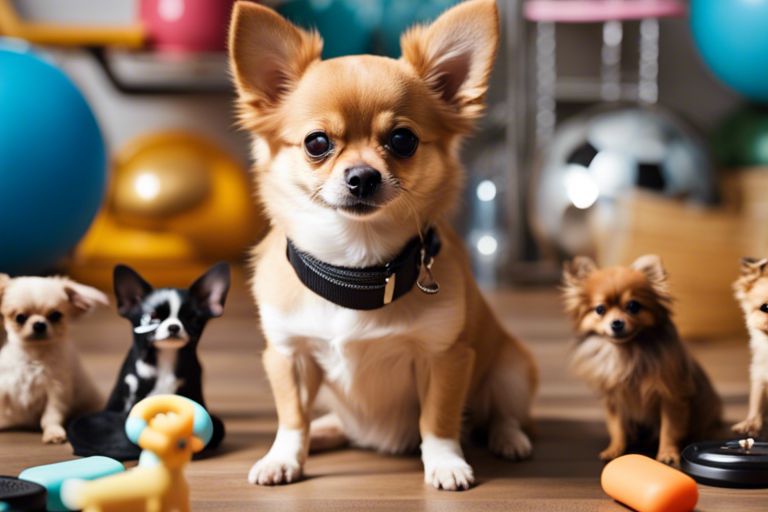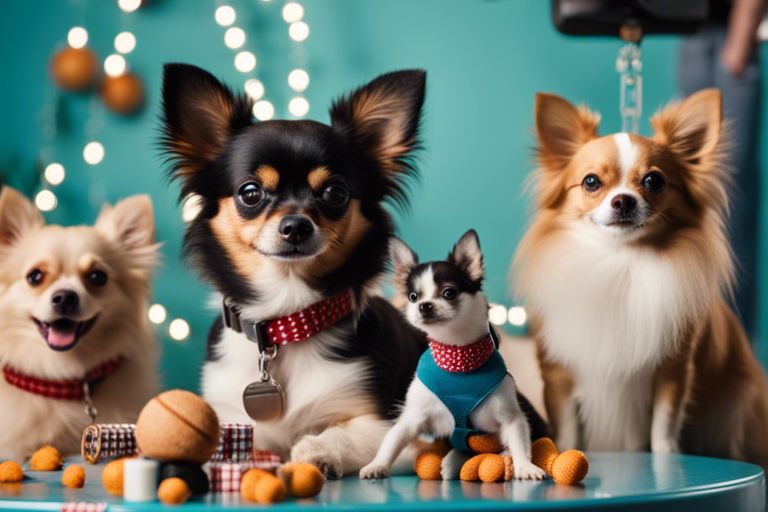You have a small pup with a big personality, like a Chihuahua or a Pomeranian, and you want to ensure they are well-behaved and obedient. Training small dog breeds requires patience, consistency, and the right techniques to help them thrive. In this comprehensive guide, we will share expert tips and strategies to help you effectively train your pint-sized companion to follow commands, behave well in various situations, and strengthen the bond between you and your furry friend. Whether you are a first-time small dog owner or looking to refine your training skills, this guide will provide you with the knowledge and tools needed to successfully train small dog breeds like a pro.
Key Takeaways:
- Consistency is Key: Small dog breeds like Chihuahuas and Pomeranians respond well to consistent training routines. Establish firm rules and boundaries to help curb any unwanted behaviors.
- Positive Reinforcement: Use treats, praise, and rewards to encourage good behavior during training sessions. Small dogs are eager to please and will respond well to positive reinforcement.
- Patience and Understanding: Remember that small dog breeds may require more patience and understanding during training due to their size and sometimes stubborn nature. Stay patient and consistent to achieve success in obedience training.

Preparing for Training
Essential Supplies for Effective Training
If you are gearing up to train your small dog breed, it’s crucial to have the right supplies on hand. Invest in high-quality treats that are small in size and easy to chew quickly, as these will be your most effective training tool. Additionally, a clicker can be a useful aid in marking desired behaviors promptly. Make sure to have a comfortable and secure harness or collar and a lightweight leash for walking and training exercises.
Setting Up a Training-Friendly Environment
Preparing the right environment for training sessions is crucial for success. Choose a quiet and distraction-free area in your home where you can focus on training without interruptions. Ensure the space is well-lit and comfortable for both you and your dog. Remove any potential hazards or chewable items that could divert your dog’s attention during training. Having a designated training area will help your dog associate the space with learning and positive reinforcement.
With these crucial supplies and a conducive training environment, you are ready to initiate on a successful obedience training journey with your small dog breed. Consistency, patience, and positive reinforcement will be key to achieving obedience and building a strong bond with your furry companion.
Training Techniques for Small Dogs
Basic Obedience Commands: Sit, Stay, Come
One of the first things you should focus on when training your small dog is teaching them basic obedience commands such as sit, stay, and come. These commands are important for effective communication with your furry companion and establishing respect and trust between you.
Tips for Potty Training and Crate Training
Even though small dog breeds have tiny bladders and may need more frequent bathroom breaks, consistency is key when it comes to potty training and crate training. Create a schedule for your dog’s feeding and bathroom breaks to help them understand when it’s time to go outside. Additionally, crate training can help with potty training and provide a safe space for your small dog when you’re not around.
- Use positive reinforcement techniques such as treats and praise when your dog eliminates in the right spot.
- Establish a routine and take your small dog outside frequently, especially after meals or naps, to prevent accidents.
Little dogs may take some time to adjust to potty training and crate training, but with patience and consistency, they can learn quickly. Remember to keep an eye on your small dog’s behavior and body language to anticipate when they need to go potty. With practice and positive reinforcement, your small dog will become a pro at following your training cues and commands.
- Keep an eye out for any signs of discomfort or anxiety in your small dog during the training process.
Behavioral Factors and Adaptations
Unlike large breed dogs, small dog breeds often have unique behavioral factors and adaptations that can affect their training needs. Understanding these differences is imperative for successful obedience training and building a strong bond with your small canine companion. After all, a well-behaved small dog is a joy to have around!
Socialization Tips for Small Dog Breeds
One of the key aspects of training small dog breeds is socialization. Exposing your Chihuahua, Pomeranian, or other small breed to various people, animals, and environments from a young age can help prevent fearfulness and aggression. Socialization helps small dogs grow into confident, well-adjusted pets that are comfortable in different situations. Any gaps in socialization can lead to behavioral problems down the line, so start early and be consistent.
Dealing with Common Small Dog Behavior Issues
Issues may arise when training small dog breeds, such as excessive barking, separation anxiety, or resource guarding. It’s crucial to address these behavior problems promptly to prevent them from becoming ingrained habits. Another important factor to consider is the size of small dog breeds can sometimes lead to owners inadvertently reinforcing negative behaviors due to their diminutive stature. Understanding the root cause of these issues and implementing positive reinforcement techniques can help you effectively address and correct them.
Advanced Training and Tricks
- Teaching Your Small Dog Fun Tricks
Trick How To Teach Roll Over Use treats to lure your dog to roll over on command, reward with treats and praise. Play Dead Start by teaching your dog to lie down, then add a verbal cue for playing dead. - How-To Incorporate Agility Training
Equipment Training Tips Weave Poles Start with a few poles close together and gradually increase the distance as your dog gets the hang of it. Tunnel Encourage your dog to go through the tunnel with treats and praise, gradually increasing speed and complexity.
Teaching Your Small Dog Fun Tricks
Even small dogs can learn fun tricks to impress friends and family. Training your small dog to do tricks not only stimulates their mind but also strengthens the bond between you. Remember to keep training sessions short and positive to keep your dog engaged and eager to learn.
How-To Incorporate Agility Training
To incorporate agility training into your small dog’s routine, start with basic equipment like weave poles and tunnels. Use treats and verbal cues to guide your dog through the obstacles. Gradually increase the difficulty as your dog becomes more confident and skilled. Agility training is a great way to keep your small dog physically active and mentally stimulated.
Maintaining Obedience and Training Progress
Creating a Consistent Training Schedule
For successful obedience training with small dog breeds like Chihuahuas and Pomeranians, consistency is key. You should have a set training schedule that includes short, frequent training sessions throughout the week. This regular routine will help reinforce learned behaviors and prevent regression.
Factors Affecting Long-Term Obedience
Factors such as consistency, positive reinforcement, and your dog’s individual personality can all influence long-term obedience in small breeds. There’s also the importance of a stable environment, where distractions are minimized to help your dog focus on training. Recognizing these factors can help you make adjustments to ensure ongoing obedience.
- Consistency in training methods
- Positive reinforcement techniques
- Understanding your dog’s personality and learning style
Training for Long-Term Success
Training small dog breeds requires dedication and patience. Consistent practice of commands and behaviors, along with positive reinforcement, is important for long-term obedience. Recognizing the progress and setbacks in your training journey can help you tailor your approach to suit your dog’s needs and maintain their obedience over time.
- Consistent practice of commands
- Using positive reinforcement techniques regularly
Conclusion
Presently, training small dog breeds like Chihuahuas and Pomeranians requires patience, consistency, and positive reinforcement techniques. By understanding their unique needs and characteristics, such as their small size and tendency to be stubborn, owners can effectively train these dogs to be obedient and well-behaved companions. Utilizing reward-based training methods and establishing clear boundaries will help small dog breeds thrive in their training regimen. With dedication and perseverance, owners can successfully train their small dogs to follow commands and exhibit good behavior in various situations.
FAQ
Q: Why is obedience training important for small dog breeds like Chihuahuas and Pomeranians?
A: Obedience training is crucial for small dog breeds to establish boundaries, improve behavior, and enhance safety. It helps in teaching them basic commands, socialization skills, and how to interact with humans and other animals in a positive manner.
Q: What are some effective training techniques for small dog breeds?
A: Positive reinforcement, consistency, and patience are key when training small dog breeds. Use treats, toys, and verbal praise to reward good behavior. Keep training sessions short but frequent to maintain their attention and interest. Avoid punishment-based methods as they can create fear and mistrust in your furry companion.
Q: How can I address specific behavioral issues in small dog breeds during training?
A: Identifying the root cause of behavioral problems is crucial for effective training. Whether it’s excessive barking, separation anxiety, or leash pulling, it’s important to approach each issue with understanding and a positive attitude. Seek professional help if needed and tailor your training techniques to suit your dog’s individual needs.

